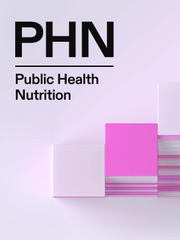Two interesting papers from the Chinese perspective caught the editor's eye in this issue. The first is on assessment of zinc intake inadequacyReference Ma, Li, Jin, Du, Kok and Yang1, the second on blood folate levels among pregnant Chinese womenReference Ren, Zhang, Hao, Li, Tian and Li2.
Children and lactating mothers might not get enough zinc
Almost 70 000 subjects, aged 2–101 years, were interviewed for the 2002 China National Nutrition and Health Survey. An added quality with this survey was that, in accordance with suggestions by WHOReference Ren, Zhang, Hao, Li, Tian and Li2, phytate levels were assessed in around 60 foods, selected based on frequency of consumption. The results were then presented as zinc intake as such, zinc density, best food sources and phytate/zinc molar ratio.
The paper shows that average phytate intake in China is higher than that in Western countries. The best sources of zinc were found to be rice and other cereals, followed by animal foods, vegetables and fruits. The groups vulnerable to zinc deficiency were shown to be children, adolescents and lactating women, especially in rural areas.
Folate status in pregnant Chinese women
The birth prevalence of neural tube defects (NTDs) in China is among the highest in the world. Within China, rural areas with the highest birth prevalence had up to 144 per 10 000. In many countries, NTDs are often diagnosed at an early stage and children aborted – which in a country like my own (Sweden, where folate fortification is not used) results in a reduction in birth prevalence from 6–8 per 10 000 born to just above 2 per 10 000.
Recently, a large studyReference Wilcox, Lie, Solvoll, Taylor, McConnaughey and Abyholm3 revealed evidence that also other birth anomalies, such as facial clefts, are related to folate deficiency. More and more information regarding the genetics of folate metabolism polymorphisms, such as those of the gene encoding methylenetetrahydrofolate reductase (MTHFR) is now available, showing its importance for maintaining healthy levels of homocysteineReference Bottiger, Hurtig-Wennlof, Sjostrom, Yngve and Nilsson4.
The purpose of the Chinese studyReference Ren, Zhang, Hao, Li, Tian and Li2 was to assess blood folate levels in early pregnancy, using two different measures (plasma folate and red-blood-cell folate) in a high-risk (birth prevalence 74 per 10 000) vs. a low-risk area (4.6 per 10 000) for NTDs. The results were as might be expected: much lower levels of both measures of folate status were found in the area with a high NTD prevalence. No polymorphism analyses were included in this study, even though previous studies point in the direction of MTHFR C677T polymorphisms being more prevalent in the Chinese high-risk areas for NTDs.
Environmental and behavioural factors revealed in the study to be of importance for a low folate status were living in a rural area, not taking supplements, having a high BMI and smoking. BMI was significantly higher in the rural high-risk area, suggesting the possible effect of increased needs of folate in fatter people, as previously shownReference Mojtabai5–Reference Ray, Wyatt, Vermeulen, Meier and Cole7. This issue may certainly present a threat to many countries where intake of folate is low.
We may see only the tip of the iceberg here, NTDs being only one of the birth anomalies resulting from insufficient folate; early spontaneous abortions, caused by the same problem, are naturally difficult to study. The increased levels of overweight in early pregnancy may also present a larger problem than we could foresee.
We look forward to more information on the measures taken in China to address the problems addressed in these two papers.


